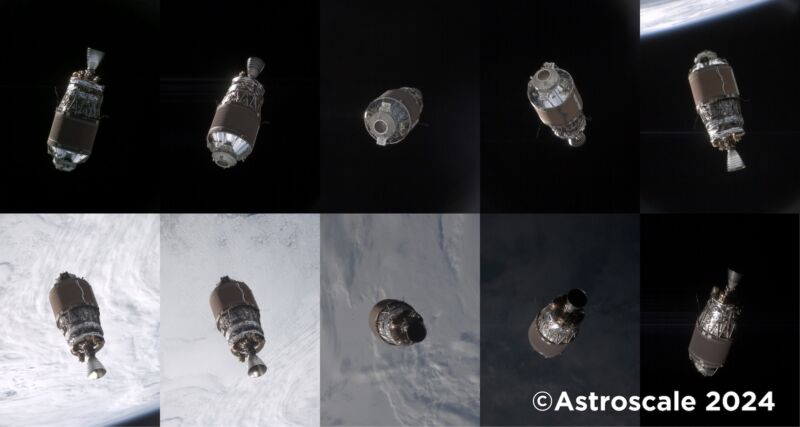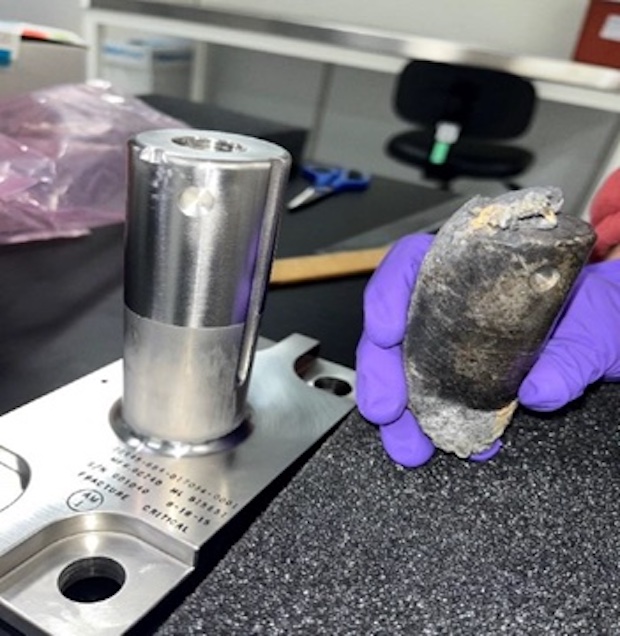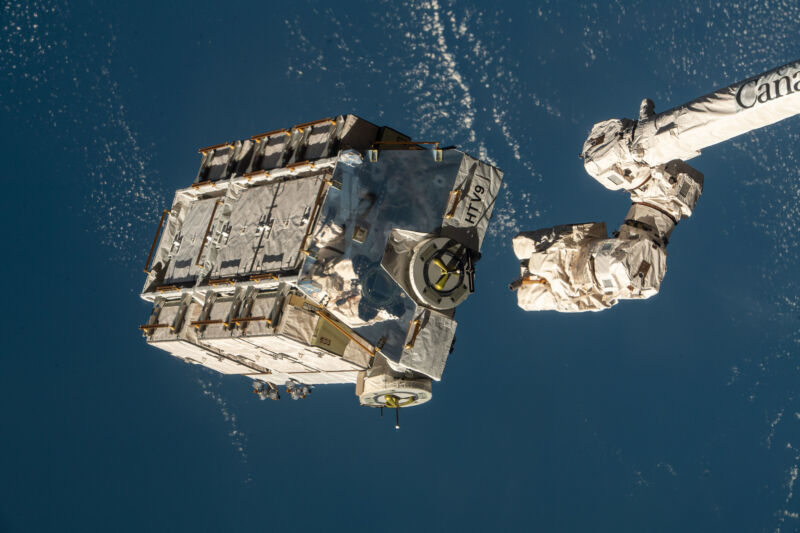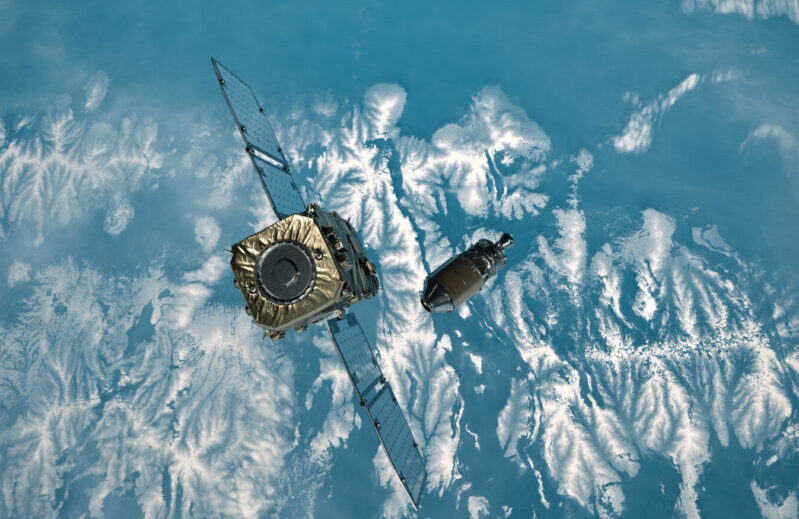There are 2,000-plus dead rockets in orbit—here’s a rare view of one

Enlarge / Astroscale's ADRAS-J spacecraft captured these views of the H-IIA rocket upper stage on July 15. (credit: Astroscale)
There are more than 2,000 mostly intact dead rockets circling the Earth, but until this year, no one ever launched a satellite to go see what one looked like after many years of tumbling around the planet.
In February, a Japanese company named Astroscale sent a small satellite into low-Earth orbit on top of a Rocket Lab launcher. A couple of months later, Astroscale's ADRAS-J (Active Debris Removal by Astroscale-Japan) spacecraft completed its pursuit of a Japanese rocket stuck in orbit for more than 15 years.
ADRAS-J photographed the upper stage of an H-IIA rocket from a range of several hundred meters and then backed away. This was the first publicly released image of space debris captured from another spacecraft using rendezvous and proximity operations.




